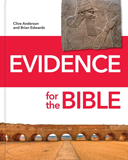Are Mustard Seeds the Smallest or Was Jesus Wrong?
In the parable of the mustard seed, Jesus calls it the smallest seed. But was it really? Both evolutionists and old-earth creationists latch onto this parable, evolutionists to discredit the Bible entirely, and old-earth creationists to prove that the Bible does not have to be taken literally. Both approaches attempt to undermine the authority of God’s Word and challenge the foundation upon which the Christian faith is based.
The term “mustard seed” shows up five times in the Bible, all in the Gospels as a part of Jesus’ teachings. In three cases it is used as part of a parable. (A parable is a story that uses earthly things to relate to a spiritual application. It is meant to teach a spiritual concept rather than a literal, earthly one.) In the other two instances, it is used as an analogy to faith. In all five cases, Jesus is specifically using the mustard seed to teach a spiritual concept, not a scientific one.
In the synoptic Gospel accounts of the parable of the mustard seed, Jesus says, “He put another parable before them, saying, ‘The kingdom of heaven is like a grain of mustard seed that a man took and sowed in his field. It is the smallest of all seeds, but when it has grown it is larger than all the garden plants and becomes a tree, so that the birds of the air come and
make nests in its branches
” (Matthew 13:31–32).
Mark and Luke repeat the same parable with similar wording, though Luke leaves off the size of the seed.
Evolutionists like to twist the phrase “the least of all seeds.” Evolutionists attempt to seize Jesus’ words and twist them to mean something Jesus didn’t intend, thus discrediting the authority of the Bible.
The Size of the Seed
The seed of the Black Mustard plant (Brassica nigra), the species found in present-day Israel, is approximately 1.0 mm in length. There are many plants, such as begonias, petunias, and wormwoods, that, today, have smaller seeds. The smallest known seed, which belongs to a species of jewel orchid (Anoectochilus imitans), measures a microscopic 0.05mm in length, though other species of orchid have seeds larger than a mustard seed. Evolutionists point to this seeming inconsistency in Jesus’ teaching and claim that science has disproved a part of the Bible, while others point to it and claim it is impossible to take the Bible literally. They then apply this supposed impossibility to Jesus’ statements about Genesis and the first 11 chapters of the book of Genesis.
This line of logic has several problems. First, it assumes a uniformitarian past. Uniformitarianism, popularized by Charles Lyell, deeply influenced Charles Darwin. Lyell used it to promote an old age of the earth, while Darwin built his theory of evolution upon it. Uniformitarianism asserts that the processes observable in the present happened at the same rates in the same ways in the past. This claim is demonstrably false, particularly as it relates to flood geology. Regarding the mustard seed, however, the assumption is less obvious.
Evolutionists are assuming that the seed sizes we observe in the present were the same in the past. It is quite possible that some or all of the plants with smaller seeds had yet to differentiate into the species we observe today. The jewel orchids, for example, might not have branched from the originally created orchid kind at the point Jesus made his statement. Even supposing these smaller seeds had branched from the orchid kind, the Jews would not have been familiar with them, so there would have been no point in Jesus citing them as an example. However, the roughly 2,000 years since Christ lived is certainly enough time for additional speciation to have occurred within the orchid kind, given the rapid rate of speciation.
If speciation is rapid, then evolutionists cannot make uniformitarian assumptions. Without these assumptions, evolutionists’ attempts to mock the Scripture lack foundation because what we observe today may not be what existed in the past. Ironically, even evolutionists admit that speciation can be rapid. Many studies have determined rapid rates of speciation in multiple life forms from algae to fish and mammals. Dr. Mark Ungerer, who specializes in evolutionary plant genetics, led one such study. Dr. Ungerer and his team studied how long it would take for a new species of sunflower to arise, and published their results in 1998. “The results of this comparison suggest that between 10 and 60 generations of recombination would be required to stabilize the H. anomalus genome.”1 The study found that it took a maximum of 60 generations to create a stable new species of sunflower. Given wild sunflower life cycles, this would equate to roughly 60 years, though the study suggested as few as 10 years was possible. With this rapid rate of change in mind, many species of plants with smaller seeds could have formed over the last 2,000 years, and therefore would not have existed when Jesus told the mustard seed parable. Thus the mustard seed could possibly have been the smallest seed in Jesus’ day. This is especially true since the context of the parable appears to point to seeds sown in the field, not every seed in existence and most farmers do not sow orchids in the field even today.
Parable vs. History
When Jesus speaks of Genesis 1, he refers to it as real history. When asked by the Jewish religious leaders for his opinion on divorce, Jesus said, “Have you not read that he who created them from the beginning made them male and female, and said, ‘Therefore a man shall leave his father and his mother and hold fast to his wife, and the two shall become one flesh’? So they are no longer two but one flesh. What therefore God has joined together, let not man separate
” (Matthew 19:4–6). This is a nearly word-for-word quote of Genesis 2:24: “Therefore a man shall leave his father and his mother and hold fast to his wife, and they shall become one flesh.” This also appears nearly word for word in Genesis 1:27. Clearly Jesus took Genesis seriously.
Jesus is referencing God making the man and the woman in the beginning and instituting the marriage relationship. He clearly regarded the opening chapters of the Bible as historically accurate, because he based his argument against divorce on the veracity of Genesis 2. Jesus viewed marriage as a sacred covenant between a man and woman, a covenant God established in the beginning. He cited Genesis as historical proof of what God said about marriage.
God’s Word is again being challenged in Jesus’ statement on the mustard seed, but it is different. While Jesus’ statement on marriage cannot be read as anything other than narrative without the use of a presupposed bias, the Scriptures clearly indicate he is speaking in a parable when he references the mustard seed being the smallest seed.
Jesus often used parables in his teaching for a number of reasons. Teachers commonly use the technique of moving from the known to the unknown. When introducing a new concept or idea, a teacher will often relate the concept to something their students already understand. This is exactly what Jesus is doing in this parable. According to commentator Alfred Plummer, the Jews of Jesus’ day used the phrase “as small as a mustard seed” to refer to anything small and almost unnoticeable.2 Jesus used this phrase to give the Jews a starting point for his parable. They were familiar with the size of the mustard seed since many of them were farmers and had planted it themselves. Jesus built upon that knowledge to explain the kingdom of God. The mustard seed was an analogy, something taking the known to the unknown. Building an idea about the spiritual realm on a known physical concept made it easier for his audience to understand. The parable was never meant to be an exposition on botanical size, while Jesus’ discussion of marriage was meant in both a historical and religious context.
Conclusion
In attempting to attack the authority of God’s Word, evolutionists ignore some very pertinent facts. They presuppose a uniformitarian view of the world and attempt to impose that view upon Scripture. This leads some evolutionists to reject the foundation of many scriptural doctrines in the first 11 chapters of Genesis, while it leads others to reject Scripture entirely. In attacking Jesus’ statements about the mustard seed, critics are attempting to undermine the authority of the Bible. That is the real problem, not the size of the mustard seed itself. Thus, the misunderstanding of the mustard seed parable is merely symptomatic of the critics’ presupposed bias against the authority of God’s Word and a not-so-ironic reflection of faith in those who would suggest Jesus, the creator of all seeds, was in error.
Footnotes
- Mark C. Ungerer, Stuart J. E. Baird, Jean Pan, and Loren H. Rieseberg. “Rapid Hybrid Speciation in Wild Sunflowers.” PNAS 95, no. 20 (September 29,1998): http://www.pnas.org/content/95/20/11757.
- Alfred Plummer. An Exegetical Commentary on the Gospel According to St. Matthew. New York: Scribner and Sons, 1909.
Recommended Resources

Answers in Genesis is an apologetics ministry, dedicated to helping Christians defend their faith and proclaim the good news of Jesus Christ.
- Customer Service 800.778.3390
- © 2024 Answers in Genesis







